Exhaust Headers vs Manifold – The Ultimate Guide
Both ensure your engine can expel nasty fumes quickly, but a few key differences make one better than the other. Welcome to our Exhaust Headers vs Manifold guide.
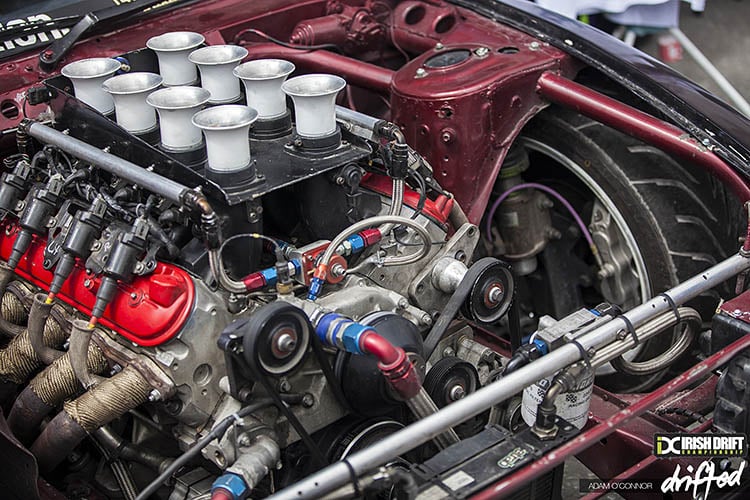
- Introduction
- Exhaust Cycle Explained
- The Scavenging Effect
- Differences Between Exhaust Headers and Exhaust Manifold
- Types of Exhaust Headers
- Exhaust Headers vs Manifold
- Exhaust Manifolds versus Headers
- Frequently Asked Questions
- Conclusion
Introduction
If you are one of those who cannot differentiate oranges from tangerines, there is no need to be ashamed. After all, both fruits look so much alike that only real fruit aficionados can tell the differences between the two.
The same dilemma exists in the exhaust headers vs manifold confusion – these two exhaust components look so much alike that most casual car fans will not be able to tell which is which at first glance.
In addition, unless you have a front-wheel-drive Honda that shows its headers front and center in the engine bay like prized trophies, these vital exhaust components are generally hidden from plain sight.
Nevertheless, as you read through this article, you will learn a few key differences that separate an exhaust header from an exhaust manifold and why tuners prefer one over the other for their engine builds.
If you want to upgrade your exhaust system, you will want to know what these differences are so you can decide which best suits your preferences in terms of power, setup, and sound.
Exhaust Cycle Explained
Before we delve into the confusing world of headers and manifolds, we first have to learn how the exhaust system works and what it does for your car.
Without going too in-depth into how the ICE or Internal Combustion Engine works, a car’s exhaust system is responsible for dealing with the engine’s exhaust stroke – the final stage in a combustion engine’s four-stroke cycle where the burnt fuel gets expelled through the exhaust system.
Most modern combustion engines are four-stroke engines that rely on four distinct strokes to produce power – Intake Stroke, Compression Stroke, Power Stroke, and, finally, the Exhaust Stroke. Completing all four cycles counts as one full combustion cycle for that particular cylinder.
By combining predetermined amounts of air, fuel, and spark, engines can produce the explosions needed to create the energy that pushes an engine’s pistons up and down the cylinder, sending power to the crankshaft, then to the drivetrain, and finally to the wheels.
Once the Intake, Compression, and Power cycle are complete, the fresh air that entered the cylinder will be reduced to exhaust gases, which the engine now needs to expel through the exhaust system to start the entire combustion cycle again.
As a rule of thumb, the faster a vehicle’s exhaust system can expel the gases, the better its engine will perform, which is especially true for high-performance engines – more on this in the Backpressure section below.
However, due to various environmental restrictions enforced in different countries, exhaust systems in modern vehicles are generally designed to keep noise, heat, and emissions to a minimum, affecting the overall performance and, of course, that sweet exhaust note that car fans crave.
The Scavenging Effect
You might hear the term scavenging thrown around now and then when members of the car community talk about their header upgrades. Don’t worry, we’ll explain what it means shortly.
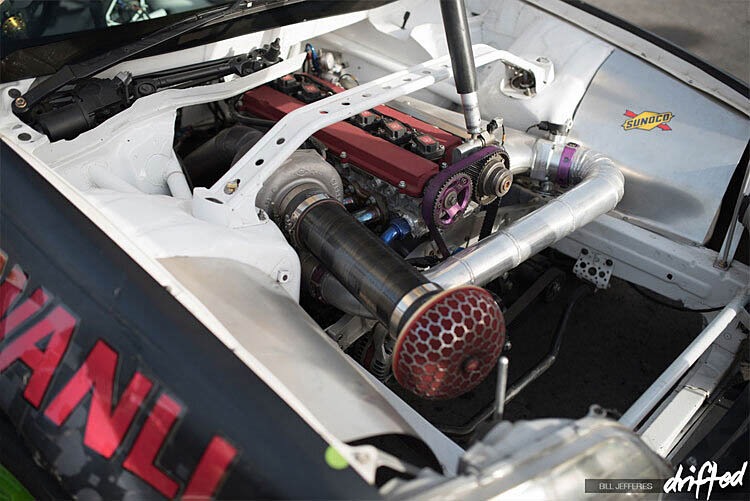
Now that you have a better idea of how the exhaust cycle works in an internal combustion engine, we’ll look at what scavenging means for exhaust headers, which should set you up nicely as you learn about the different types of headers in the next section.
What is Scavenging?
Scavenging means “to collect,” and when talking about exhaust headers, scavenging pertains to the header’s ability to create a vacuum effect that pulls out the gasses from the cylinder and by extension, pulls in fresh air into the cylinder.
A free-flowing header will allow the engine to expel exhaust gasses much faster, leading to higher air velocity as gasses escape the exhaust system.
The unrestricted airflow leads to a much higher-speed exhaust pulse that flows freely down the exhaust system. The faster these pulses can travel through the system, the higher the pressure in front of the pulse and the lower pressure behind it.
This low pressure creates a vacuum effect within the manifold. The faster the gasses can flow, the more pronounced this phenomenon becomes.
Watch it in action in the interesting video by CorkSport Mazda Performance below.
How does the Scavenging Effect Increase Performance?
Backpressure is yet another term that car and tuning fans casually throw around in discussions, and we bet you’ve already heard the people say things like: “Your Exhaust is too open; you’ll lose backpressure.” We are here to clear up any confusion once and for all.
Remember the exhaust stroke? We mentioned how the engine must expel gasses to increase performance quickly. Backpressure plays a part in this process as well.
Backpressure is a natural phenomenon within the engine cylinders where the exhaust system cannot pull the gasses as quickly as possible (stock manifold), which causes the engine’s piston to expend effort in forcefully pushing out the gasses instead.
As mentioned above, the Scavenging Effect that a free-flowing header provides eliminates backpressure, relieving the engine of any additional strain in the exhaust cycle thanks to the pulling or vacuum effect that comes with a free-flowing header.
The result is a more efficient engine that can work freely and is unrestricted, increasing horsepower. This is also the main reason why just about any engine can see immediate performance gains when swapping out the stock manifold for a free-flowing header.
A stock manifold is generally restrictive and does not flow as freely as custom-made headers, but there’s a good reason for that.
Differences Between Exhaust Headers vs Manifold
So what are the differences between exhaust headers and manifolds?
The most noticeable differences between these two components are:
- Heat
- Emissions
- Performance
- Sound
- Weight
Let’s start with the Exhaust manifold, since this is what most cars are equipped with from the factory.
Exhaust Manifold
Car manufacturers will prioritize reliability and conforming to international emissions standards. As a result, most cars will come with an exhaust manifold from the factory.
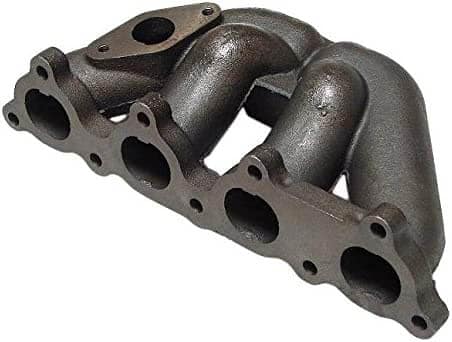
With a manifold, manufacturers can restrict the amount of noise, heat, and emissions that production cars emit, which aids in their efforts to keep emissions and noise to a minimum.
On the other hand, manifolds are generally made from a more simple single piece of cast iron – simplifying the production process and reducing overall production costs.
With simplicity comes compromises, however, as the overall design of the exhaust manifold restricts engine performance and adds a considerable amount of weight to the engine bay.
Exhaust Headers
Exhaust headers, on the other hand, are the complete opposite of the humble exhaust manifold, offering improved engine performance, weight, and sound, at the cost of more heat and worse emissions numbers.
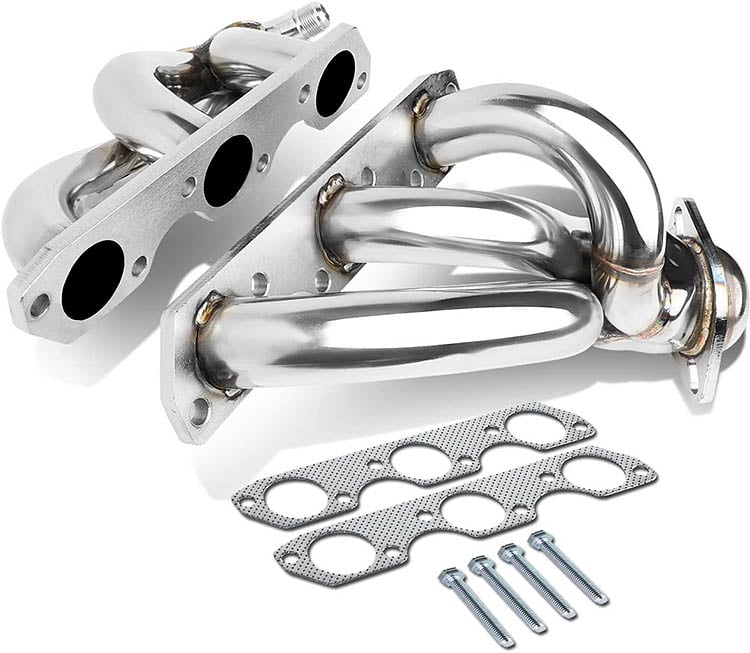
Exhaust headers are usually made using Stainless Steel, which is lighter, more durable, and rust-resistant than cast iron exhaust manifolds.
If you are chasing maximum performance for your drift car there is just no competition – get rid of your exhaust manifold and swap in a header for improved performance.
Get a better idea of what type of header you need to take your drift car to the next level by reading through the different types of exhaust header in the next section.
Types of Exhaust Headers
Exhaust headers come in all kinds of tube shapes, sizes, materials, lengths, and even configurations (equal lengths versus unequal length primary tubes).
Nevertheless, a header’s overall length and design will yield the most noticeable difference in power gains and delivery. This leaves us with three of the most common types of exhaust header on the market today – shorty headers, long tube headers, and tri-Y Headers.
Long Tube Headers
Long tube headers feature comparatively longer primary pipes compared to the ones found in your stock manifold. Some key benefits of this design:
- Better power at Low-Mid RPM
- More Noise (Subjective)
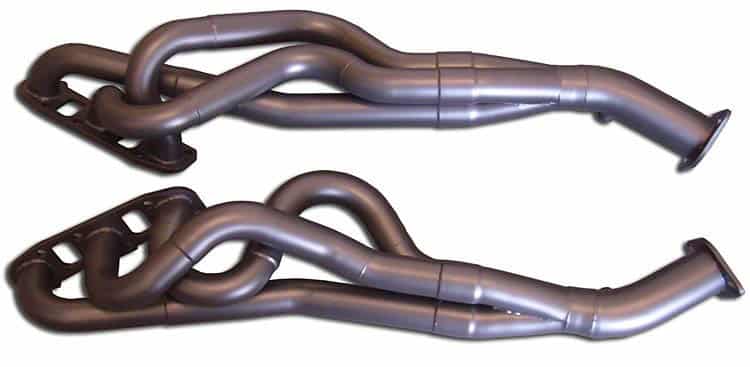
In four-cylinder engines, long tube headers feature long individual primary pipes that extend down the engine bay and merge into a single collector pipe. This design is called a 4-1, or 4-2-1 manifold.
While other factors such as individual tube length and diameter also play a role in how a long tube header performs, owners can expect better low-mid RPM power figures and a much louder exhaust note from this design.
Need long-tube headers for your Nissan 350Z/370Z project car? Check out the beautiful PPE Engineering Long Tube 370Z Headers from Enjuku Racing.
Shorty Headers
As the name suggests, shorty headers are short-piped headers that are generally smaller and easier to install than the bulky and unwieldy long tube header design. Short headers offer the following benefits:
- The smaller footprint makes short headers the ideal choice for crowded engine bays.
- Potentially less weight than the long tube header design.
- Can work with existing exhaust components with little to no modification.
- Potentially better power at higher-RPMs
- Less noise (Subjective)
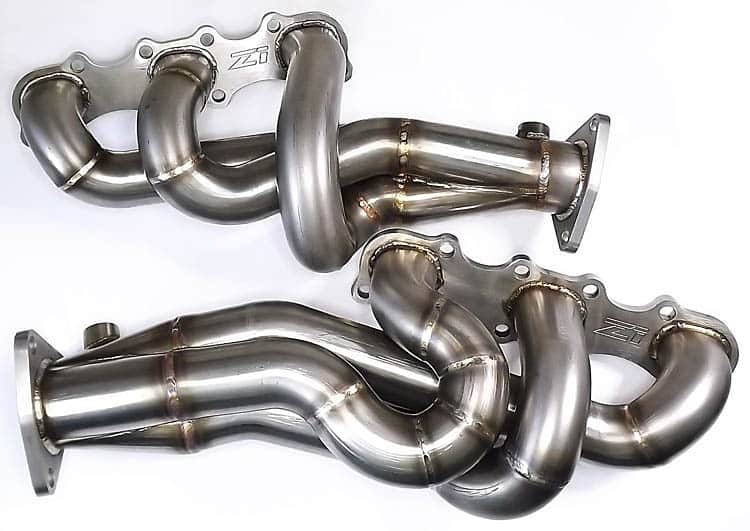
Because of the shorty header’s shorter overall primary pipes’ length, this design produces less power than the long tube header.
Nevertheless, shorty headers still provide a significant power increase over a stock exhaust manifold, so it is still worth upgrading to this type of exhaust header if you are still rocking your stock exhaust manifold. They are easier to install as well, so that is a plus.
Tri-Y Headers
Long tube headers and the shorty headers feature a 4-1 design where all four primary pipes flow towards a single collector. The collector is essentially the part of the exhaust header where all four exhaust gasses flow and gather on their way out of the exhaust system.
Instead of the usual single collector design found in the Long Tube and shorty headers, the tri-Y exhaust header design features two collectors, which, in theory, help maintain exhaust velocity by introducing a secondary ‘scavenging effect’ between the two collectors. (refer to the Scavenging Effect discussion above)
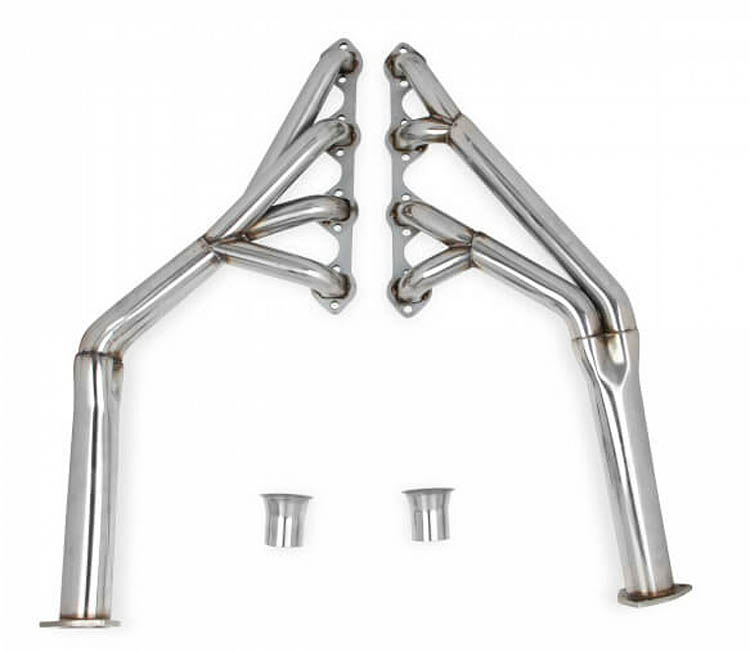
The result is better Low-Mid range torque figures and comparable peak power versus the 4-1 long Tube and shorty header design.
Keep in mind, however, that a few other factors contribute to a Tri-Y exhaust header’s overall power gains, such as primary tube diameter, collector diameter, and collector length.
Exhaust Headers vs Manifold
There is just no competition when it comes to maximum performance – an exhaust header’s high-flow design will trump an exhaust manifold any day of the week, and here is why:
Performance
The improved airflow that an exhaust header design provides allows exhaust gasses to flow out unhindered, which reduces the amount of backpressure and allows the pistons to move up and down freely in the cylinder, increasing engine power.
A high-quality exhaust header can increase engine power by 5-10% depending on the car’s factory state of tune. A high-sprung engine, such as Honda’s venerable K20, can gain up to 10 horsepower just by swapping out the stock manifold for a custom Header.
Sound
Sound can be a very subjective topic, so the increased engine noise that a header provides can either be a pro or a con depending on who you’re talking to.
Nevertheless, we think most car and drifting fans will appreciate the increased noise that comes with swapping out the stock cast iron manifold for custom headers. We just hope your neighbors feel the same way.
Weight
Exhaust headers also win outright in overall weight savings between the two designs. Manufacturers use thick cast iron – a heavier material than stainless steel – to make exhaust manifolds.
Less weight is always desirable in any project car, and the reduced overall weight will make your car feel more agile and improve handling.
Aesthetics
If you are somebody who cares about how their engine bay looks, you will want to swap out your stock exhaust manifold for the much shinier custom-made headers.
Trust us; there is not a single factory manifold that looks good. The cast iron construction means that factory manifolds will generally have that matte look that is difficult to clean up and will eventually look disgusting when the factory coating finally gives out, letting rust run its course.
Manifolds vs Exhaust Headers
Exhaust headers will trump the humble exhaust manifold in just about anything performance related. However, that does not mean that the exhaust manifold is completely useless – far from it in fact.
Noise
Your neighbors will love you for keeping your stock exhaust manifold installed on your car now and for the forseeable future.
Comparatively speaking, the stock exhaust manifold should keep your car at very sensible noise levels both at both idle and full tilt, which is good for yours and every one else’s ears. Oh, and you won’t sound like you’re doing 100 when you’re actually doing 30. So there’s that.
Emissions
As mentioned earlier in this guide, the stock exhaust manifold restricts exhaust flow, which keeps the engine at factory spec fuel/air ratio. In this configuration, you won’t have to worry about passing smog tests since your car will conform to any environmental regulation related to exhaust emissions like it did back when it first rolled out of the factory.
Of course, mother nature will thank you for the reduced emissions as well.
Cost
Now here’s the real elephant in the room.
We’ve gushed over the exhaust header so much we might as well give it a piston ring and marry it at this point.
However, we have yet to discuss an important point of contention between the exhaust headers versus manifold – cost.
We’re definitely not going to deny it – a decent exhaust header for the Nissan 370Z, for example, will set you back a cool $700 just for the exhaust headers alone. We don’t even want to know what the rest of the exhaust system will end up costing when all is said and done.
Meanwhile, keeping the stock manifold won’t cost you a single dime or penny.
But of course, you probably already knew that, and enthusiasts will know that the pursuit of performance won’t come cheap. It’s just a painful part of the hobby.
Frequently Asked Header & Manifold Questions
We are sure you still have quite a few questions that we have not answered in this guide. So we have lined up some of the most asked questions regarding headers vs manifolds in this FAQ section.
Do headers require a tune?
Yes. If you want to get the maximum performance out of your shiny new headers, you are going to want to get a tune for your car.
Your stock ECU works by supplying a fixed amount of air and fuel into the engine’s cylinders. These values are predetermined by the factory and work under the assumption that the car’s exhaust and intake components remain unchanged.
When swapping out a car’s manifold for a better-flowing header, the engine can expel those exhaust gasses much faster. This will most likely throw off the stock ECU’s air/fuel ratio since your engine is getting more air for the same amount of fuel.
Getting a tune will help feed the engine the fuel it needs to match the extra oxygen coming into the combustion chamber, improving engine power in the process.
Are headers legal?
Depending on which country or state you are in, swapping out your car’s manifold for a header is generally legal as long as your local government does not have a law that prohibits any type of engine modification.
However, things get more complicated when other laws such as emissions and noise regulations come into play.
As mentioned earlier in the article, headers generally increase the amount of smog or emissions that your car emits, especially if you are running a cat-less system (no catalytic converter) In addition, headers increase the amount of noise that your car’s exhaust system emits, which could breach noise regulations in your area.
Check with your country or state’s local DMV to make sure you don’t break any laws from swapping out your stock manifold for a header.
Do headers improve gas mileage/MPG?
With the right tune, a free-flowing header can improve your car’s gas mileage/MPG.
Horsepower gains are often associated with increased gas consumption and reduced MPG. However, if your local tuner does a great job tuning your car for better efficiency, you can get better gas mileage from an exhaust header swap.
More horsepower at the same or better MPG? Yes, please!
How much horsepower do headers add?
Depending on the engine type and the factory state of tune, swapping out the stock exhaust manifold for aftermarket headers can net a horsepower increase of five to twenty horsepower.
The more restrictive the stock manifold design is, the more power you can expect to gain from an aftermarket header.
What’s louder – shorty or long tube headers?
Long tube headers are known to be considerably louder compared to shorty headers.
Check out this video by DonnyR/T on Youtube to get a better idea of how much louder a Long Tube Header sounds versus shorty headers on a V8 engine.
If anything, the Long Tube Headers definitely sounded meaner in the video. Whether that’s your cup of tea is going to be up to you. Just make sure you have taken noise and emission laws into account when installing either a shorty or long tube header.
Exhaust Manifold vs Shorty Headers
A good set of shorty Headers will give more power and weigh less than a stock exhaust manifold.
Out of all the exhaust header designs on the market today, shorty headers will be the most stock-looking option since, generally, shorty headers are designed to be a bolt-on affair that works with the rest of a car’s stock exhaust components.
That’s where the similarities end, however, as short headers are still going to be less restrictive overall versus a stock manifold.
The stainless steel construction and design of shorty headers will allow exhaust gasses to flow much more freely compared to a stock exhaust manifold design, which should immediately increase engine power.
Conclusion
We hope we didn’t paint too dark and hopeless a picture of the humble exhaust manifold in this guide. There’s no way a stock engine part can win on a website dedicated to car modifications and tuning!
Jokes aside, both the header and manifold have their respective places under the hoods of thousands of cars around the world. It all just depends on what your preferences and goals are for your builds.
Learning about how an exhaust system works should help you understand why exhaust headers vs manifold changes engine behavior the way they do. In a perfect world, there won’t be a need for the restrictive exhaust manifold design, as enthusiasts can just slap on the most free-flowing exhaust that satisfies Newton’s Laws of Motion the best.
However, that is not often the case, as manufacturers also have to take environmental damage into account along with various laws and ordinances that are present in many countries and states – the main reason why the restrictive exhaust manifold design exists in the first place.
Nevertheless, enthusiasts who want to extract every bit of performance from their engines will have no other option but to install an aftermarket header, as this will yield the most power gains for just about any type of engine build.
Whether you go for a shorty, long tube, or a tri-Y header will also depend on where and how you want your power to feel when you step on the gas pedal.
Whichever route you go for, you can expect noticeable power gains by simply swapping out the stock manifold for a free-flowing header.
Thank you for reading our exhaust headers vs manifold Guide
We hope that we’ve covered everything you could want to know about how exhaust manifolds and headers compare. If you enjoyed this article, please share it with the buttons at the bottom of your screen. If you’ve found this information useful, then please take a moment to share it with other drifting and tuning fans. We appreciate your support.
Photography credits
We thank the following entities for the use of their photography in this article:























